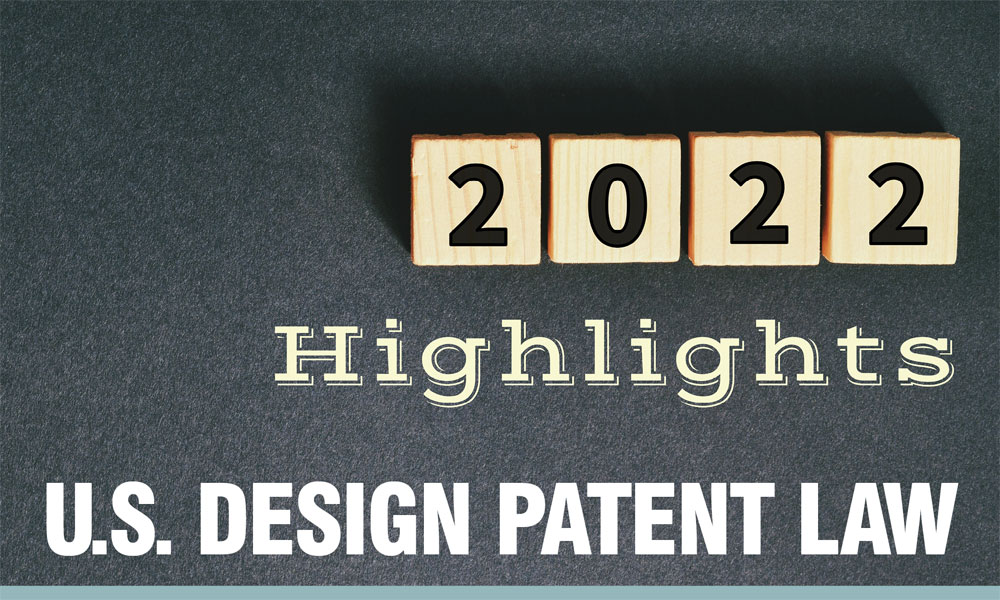
Feb. 10, 2022
Preliminary Price Quotes To A Potential Customer Trigger An Invalidating Offer For Sale
Defendants Medical Components, Inc. and Martech Medical Products, Inc. appealed a lower court decision awarding $1.2 million in damages to plaintiff Junker for infringement of Junker’s design patent directed to a “Handle For Introducer Sheath.” The defendants challenged the decision, asserting that a letter written by Junker in response to a potential customer's “request for quote” prior to the statutory critical date was a commercial offer for sale that invalidated the design patent.
In Junker v. Medical Components, Inc., et al., 25 F.4th 1027 (Fed. Cir. 2022), the Federal Circuit sided with the defendants and vacated the lower court decision. Junker sent the letter in question to a single recipient in response to a “request for quotation,” signaling that the letter was not an “unsolicited price quote” or “invitation to negotiate.” The letter further included terms typical to the formation of a commercial contract, including delivery conditions, a payment term, and several purchase options. The Federal Circuit acknowledged that the letter used the word “quote” three times, but concluded that the letter “taken as a whole” was “an intent to make a commitment…rather than merely negotiation.” As a result, Junker’s offer for sale, which occurred more than one year before the effective filing date of the application, invalidated the design patent.
May 5, 2022
The Hague International Design System Is Available To Eligible Applicants Seeking To File For Design Patent Protection In China
Prior to May 5, 2022, the only way to apply for industrial design protection in China was to file directly with the China National Intellectual Property Administration through a local agent. Seeking to increase opportunities for innovators to obtain design protection in China, on February 5, 2022, the Chinese government deposited its instrument of accession to the Geneva Act of the Hague Agreement (1999) Concerning the International Registration of Industrial Designs (“Hague Agreement”) and became the 68th contracting party to accede to the Hague Agreement, and the 77th member of the Hague Union. The Hague Agreement entered into force in China on May 5, 2022, and now provides a second procedural mechanism for design applicants to file in China.
The Hague System, established by the Hague Agreement, affords rights holders the ability to apply for design protection in multiple countries through the filing of one international design application. An applicant can now simultaneously file one design application that covers China (alone or) in combination with one or more of the 93 other contracting member states, such as the United States, Canada, Mexico, Singapore, Korea, Japan, the European Union, and the United Kingdom. While an Applicant must meet certain requirements to qualify for use of the Hague System, depending on the filing strategy, use of the Hague System can simplify international filing and reduce overall costs.
June 22, 2022
Patent Owner’s Victory Not “In the Bag”; Federal Circuit Invalidates Foldable Bag Design Patent
In Golden Eye Media USA, Inc. v. Evo Lifestyle Products Limited, No. 2021-2096 (Fed. Cir. June 22, 2022) (unpublished), Evo Lifestyle appealed a district court’s summary judgement holding that invalidated Evo’s design patent directed to a “Foldable Bag,” and particularly one that is “reusable” and “fits within a shopping cart.” The bag design includes two poles extending through the bag handles that are sized to rest on the edges of a cart and help to retain the bag in an open position within the cart. Among others, the district court determined that this patented design was improperly dictated by function and invalidated the design patent. Evo challenged the decision on the grounds that the district court misapplied the functionality test, as well as other grounds.
The Federal Circuit affirmed the lower court’s decision. Applying the five-factor functionality test, the Federal Circuit determined that the design of the horizontal poles extending through the bag handles were required for the bag to fit within the cart while in an upright position. Moreover, an alternative design of the poles would “directly and adversely impact the functionality of the bag.” The Federal Circuit also placed weight on numerous advertisements praising the utility of the bags. For example, Evo advertised the bags as being able to “’halve the time at the checkout as packing is quicker and easier without the hassle of holding bags open.’” Based on these factors, the Federal Circuit found no clear error and upheld the invalidity finding based on functionality of the design.
October 28, 2022
Federal Circuit Reaffirms Product-by-Product Analysis In View Of Prior Art For Infringement Analysis
In ABC Corporation I, et al. v. The Partnership and Unincorporated Associations Identified On Schedule “A,” 5 et al. 2 F.4th 934 (Fed. Cir. 2022), the Federal Circuit overturned a lower court’s grant of preliminary injunction. At issue was whether the lower court properly found a likelihood of success on the merits that the accused products infringed the four design patents. The Federal Circuit disagreed and concluded that among others, the district court failed to properly “conduct the ordinary observer analysis through the lens of the prior art.”
In its analysis, the Federal Circuit determined that the district court failed to apply the “ordinary observer test on a product-by-product basis.” The district court instead adopted the patent owner’s analysis and that of its expert by analyzing the accused hoverboards as a collective group. In doing so, the district court improperly focused on a common feature among the boards - the hourglass shape - without taking into consideration the differences in design among the individual boards, as compared to the prior art. Moreover, the preliminary injunction itself failed to correlate the accused products with product ID numbers and failed to contain any specific infringement findings to support an injunction. In view of this (and three other grounds of error), the Federal Circuit vacated the preliminary injunction.